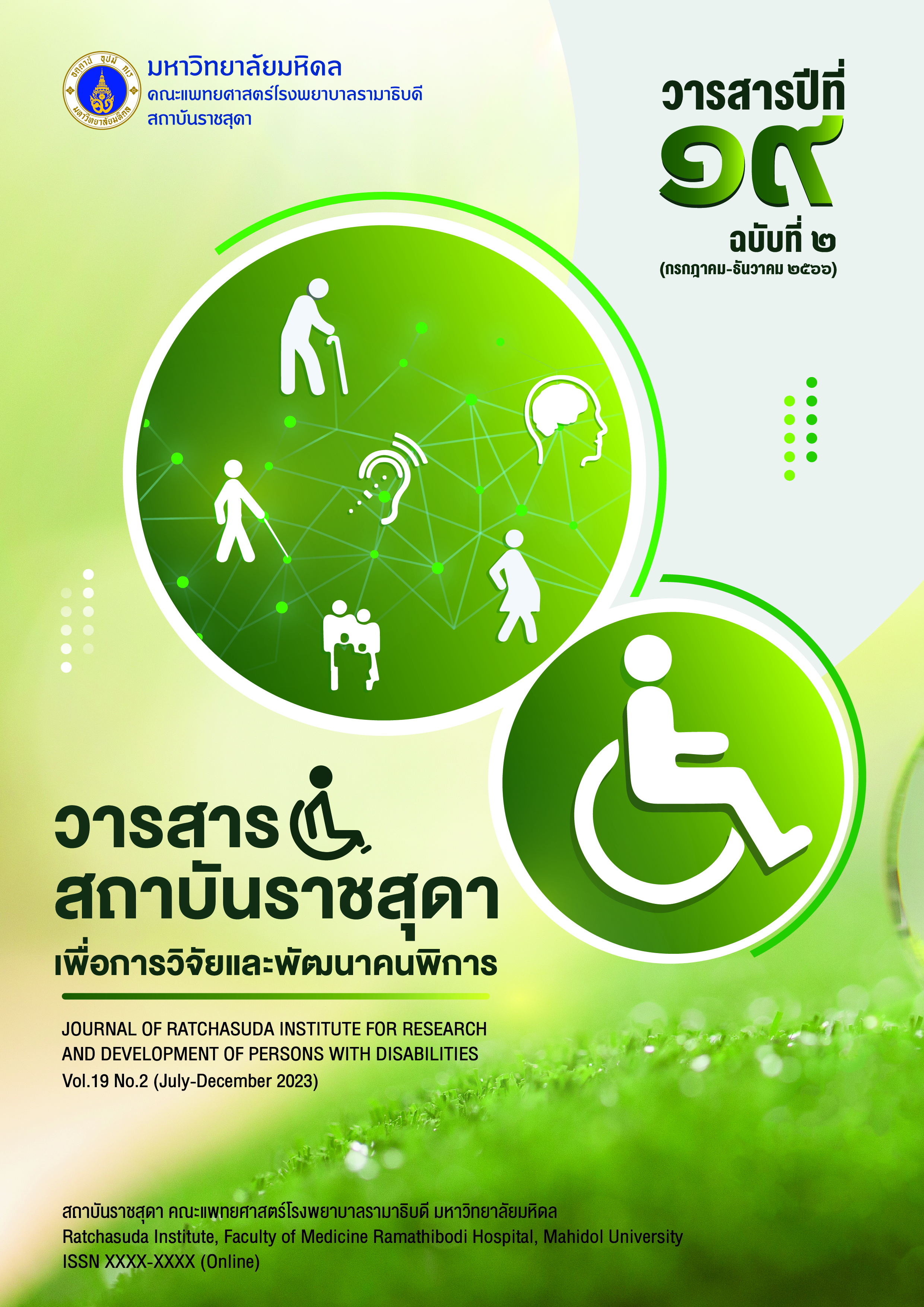The Development of Innovative Design Competency according to the Design Thinking Concept for the Graduates in Special Education Program
Keywords:
Educational Innovation, Special Education, Design Thinking ConceptAbstract
This research was the development of innovative design competency according to the design thinking concept for the graduates in Special Education program. The objectives of the study were: (1) to develop the innovative design competency according to the design thinking concept for the graduates in Special Education program, (2) to study the satisfaction of the graduates in Special Education program who were taught by the teaching method according to the design thinking concept. The samplings were 9 graduates who were studying in Special Education program. They were selected from the purposive sampling. The research method was the quasi-experimental design, and the one group pretest-posttest design was used in this study. The findings were as follows: (1) According to the result of the development of innovative design competency according to the design thinking concept for the graduates in Special Education program, the mean score was 88.15 percentage. This result passed the criteria related to the hypotheses. (2) The results of the satisfaction of the graduates who were studying in Special Education program were divided into 3 parts. The first part was the instruction. The mean score was 4.51 and the standard deviation was 0.55. The satisfaction was in the highest level. The second part was the instructional media. The mean score was 4.50 and the standard deviation was 0.51. The satisfaction was in the highest level. The third part was the assessment and evaluation. The mean score was 4.56 and the standard deviation was 0.56. The satisfaction was in the high level. Moreover, the mean score of all parts was 4.50 and the standard deviation was 0.51. The satisfaction was in the highest level. Consequently, the research results passed the criteria according to the hypotheses.
Downloads
References
Brown, T. (2009). Design Thinking. Harvard Business Review. (2), 84-95.
Buasonte, R. (2019). Innovation Research and Development. Printing House of Chulalongkorn University.
Chittep, P. (2021). The Development of Social Innovation Creative Ability in Geography using Design Thinking Learning Process for Mathayom-Five Students [Master’s Thesis, Silpakorn University]. Graduate School, Silpakorn University. https://sure.su.ac.th/xmlui/handle/123456789/26492?attempt=2&
Dewey, J. (1963). Experience and education. Macmillan Publishing Company.
Komonmarn, C. (2018). Social Innovation For Health Driving Through Child and Youth Participation. Journal of Social Work. 26(1), 120-145.
National Education Act B.E. 2542. (1999). Government Gazette. No.116 Section 74A. page 1-23.
Office of the Education Council, Ministry of Education. (2017). National education plan B.E. 2560-2579. Office of the Education Council.
Office of the National Economic and Social Development Council. (2017). National Economic and Social Development Plan No. 12 B.E. 2560-2564 (2017-2021.). Office of the National Economic and Social Development Council, Office of the Prime Minister Bangkok, Thailand.
Seidel, V. P., & Fixson, S. K. (2013). Adopting Design Thinking in Novice Multidisciplinary Teams: The Application and Limits of Design Methods and Reflexive Practices. Journal of Product Innovation Management, 30(1), 19-33.
Waichompu, N., & Jussapalo, C. (2017). Challenges of Nursing Instructors: Blended Learning. EAU HERITAGE JOURNAL SCIENCE AND TECHNOLOGY. 11(1), 15-29.
Waitayasin, P. (2019). Education 4.0: "Changing" The Learner to Innovator, Creating New Innovation Education. Education and Communication Technology Journal, 14(17), 37-51.
Ware, C. (2008). Visual Thinking: for Design. Morgan Kaufmann.
Yenawine, P. (2013). Visual Thinking Strategies: Using Art to Deepen Learning Across School Disciplines. Harvard Education Press.
Downloads
Published
How to Cite
Issue
Section
License
Copyright (c) 2023 Journal Of Ratchasuda Institute for Research and Development of Persons With Disabilities

This work is licensed under a Creative Commons Attribution-NonCommercial-NoDerivatives 4.0 International License.
บทความที่ได้รับการตีพิมพ์เป็นลิขสิทธิ์ของวารสารสถาบันราชสุดาเพื่อการวิจัยและพัฒนาคนพิการ






